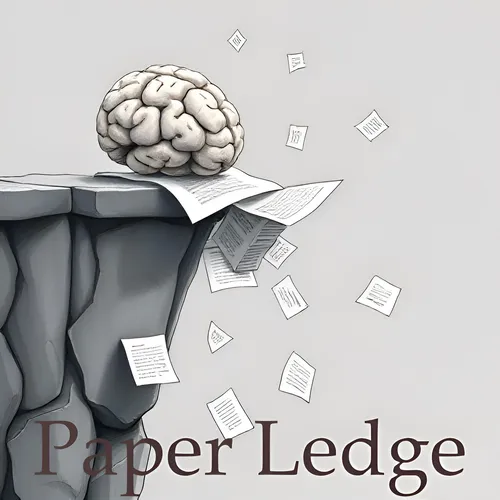Computation and Language - Quantization Meets dLLMs A Systematic Study of Post-training Quantization for Diffusion LLMs
- Author
- ernestasposkus
- Published
- Thu 21 Aug 2025
- Episode Link
- https://www.paperledge.com/e/computation-and-language-quantization-meets-dllms-a-systematic-study-of-post-training-quantization-for-diffusion-llms/
Hey everyone, Ernis here, and welcome back to PaperLedge! Today, we're diving into some fascinating research that could change how we interact with AI on our phones and other devices. Imagine having a super-smart AI assistant that can write emails, summarize documents, or even brainstorm ideas, all running smoothly on your phone without draining the battery in minutes.
That's the dream, right? Well, this paper tackles a big hurdle in making that dream a reality. It's all about diffusion language models or dLLMs. Now, you might be thinking, “dLL-what?” Think of it like this: imagine an artist creating a masterpiece. Instead of painting stroke by stroke, they start with a blurry canvas and gradually refine it until the image emerges. dLLMs work similarly. They start with random noise and slowly “denoise” it into coherent text. This is different from traditional AI models, which build sentences word by word.
The cool thing about dLLMs is that they use something called "full attention". It's like giving the AI the ability to see the whole picture at once, allowing it to generate more creative and contextually relevant text. However, these models are HUGE! They require a ton of computing power, making them difficult to run on smaller devices like phones or tablets. It's like trying to fit an elephant into a Mini Cooper!
So, how do we shrink the elephant? That's where quantization comes in. Think of it like compressing a digital photo. You reduce the file size without losing too much quality. In this case, we're reducing the size of the AI model, making it more efficient. A popular technique for compressing standard AI models is called post-training quantization (PTQ). But nobody has really looked at how this works for dLLMs… until now!
This paper is the first to systematically investigate how well PTQ works on these newfangled dLLMs. The researchers found a major challenge: activation outliers. Imagine a volume knob on a stereo system. Most of the time, the volume is at a normal level. But sometimes, there's a sudden, ear-splitting spike! These spikes are like the activation outliers in the AI model, and they can throw off the whole quantization process. It's like trying to adjust the volume for the average sound when all you hear are the loud spikes!
The team rigorously tested different PTQ methods, bit-widths (how much we compress the model), tasks, and model types. They wanted to get a complete picture of how quantization affects dLLMs under various conditions. Their analysis is structured along four key dimensions:
- Bit-width: How much can we compress the model without sacrificing too much performance?
- Quantization method: Which compression techniques work best for dLLMs?
- Task category: How does compression affect different tasks, like text summarization or question answering?
- Model type: Do different dLLM architectures respond differently to compression?
Why does this matter?
- For consumers: This research could pave the way for more powerful AI features on your smartphones and other devices, without sacrificing battery life or performance.
- For developers: These findings offer practical guidance on how to compress dLLMs, making them more accessible for a wider range of applications.
- For researchers: This work provides a crucial foundation for future research in efficient dLLM deployment.
"We hope our findings provide a foundation for future research in efficient dLLM deployment."
The researchers are even releasing their code and experimental setups to help the community build on their work. How awesome is that?!
So, what are some questions that pop into my mind after reading this paper?
- If these activation outliers are such a problem, could we design dLLMs to be inherently more quantization-friendly, maybe by smoothing out those spikes?
- Beyond PTQ, what other compression techniques might be effective for dLLMs, like pruning or knowledge distillation?
- And looking further ahead, could we design entirely new AI architectures that are both powerful and efficient, specifically targeting edge devices?
That's all for today's PaperLedge. I hope this gave you a better understanding of the challenges and opportunities in deploying diffusion language models on edge devices. Keep learning, keep exploring, and I'll catch you next time!
Credit to Paper authors: Haokun Lin, Haobo Xu, Yichen Wu, Ziyu Guo, Renrui Zhang, Zhichao Lu, Ying Wei, Qingfu Zhang, Zhenan Sun
